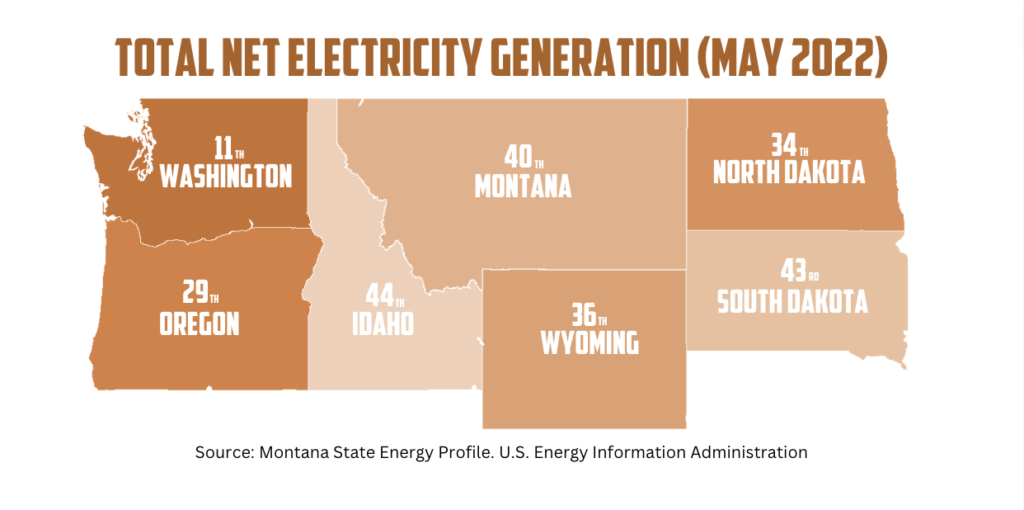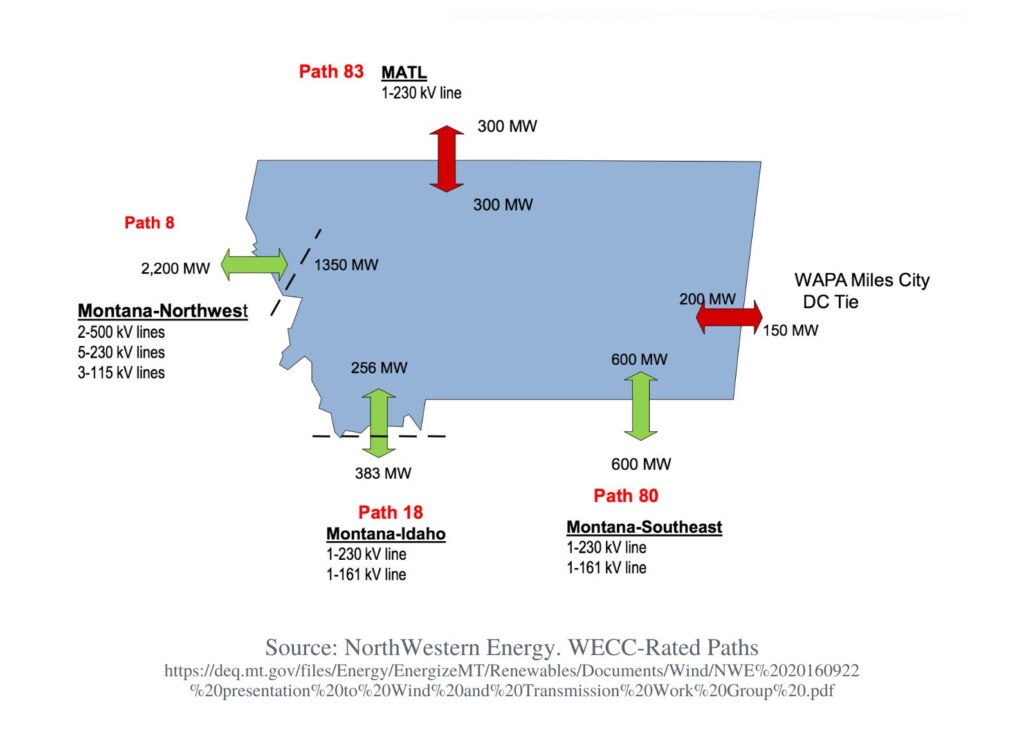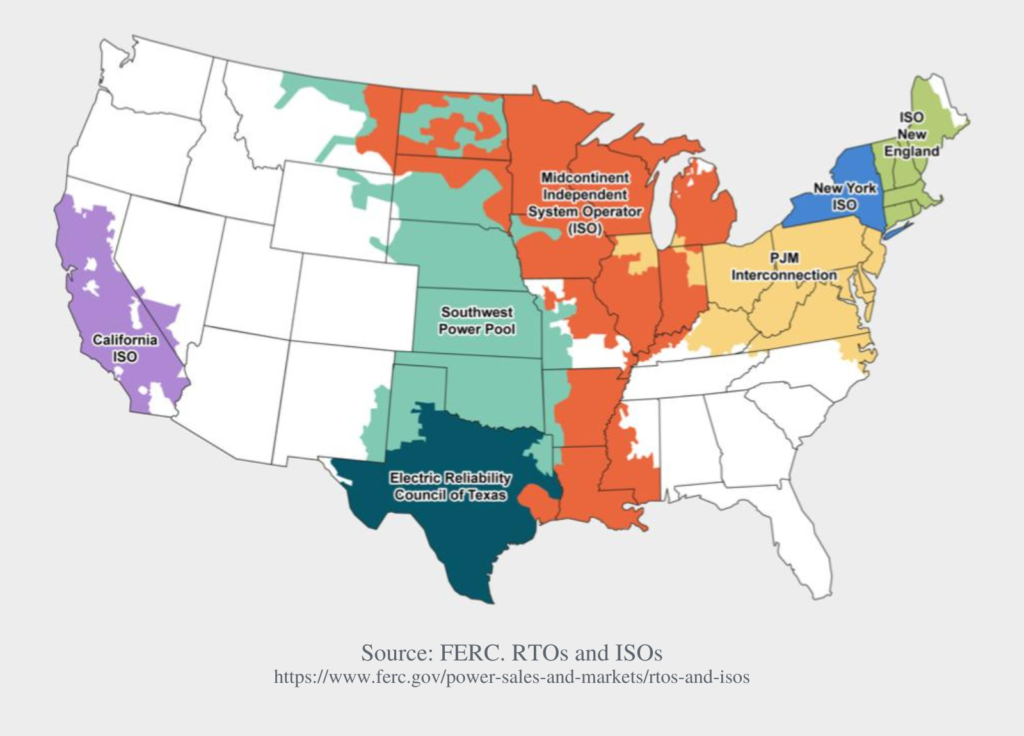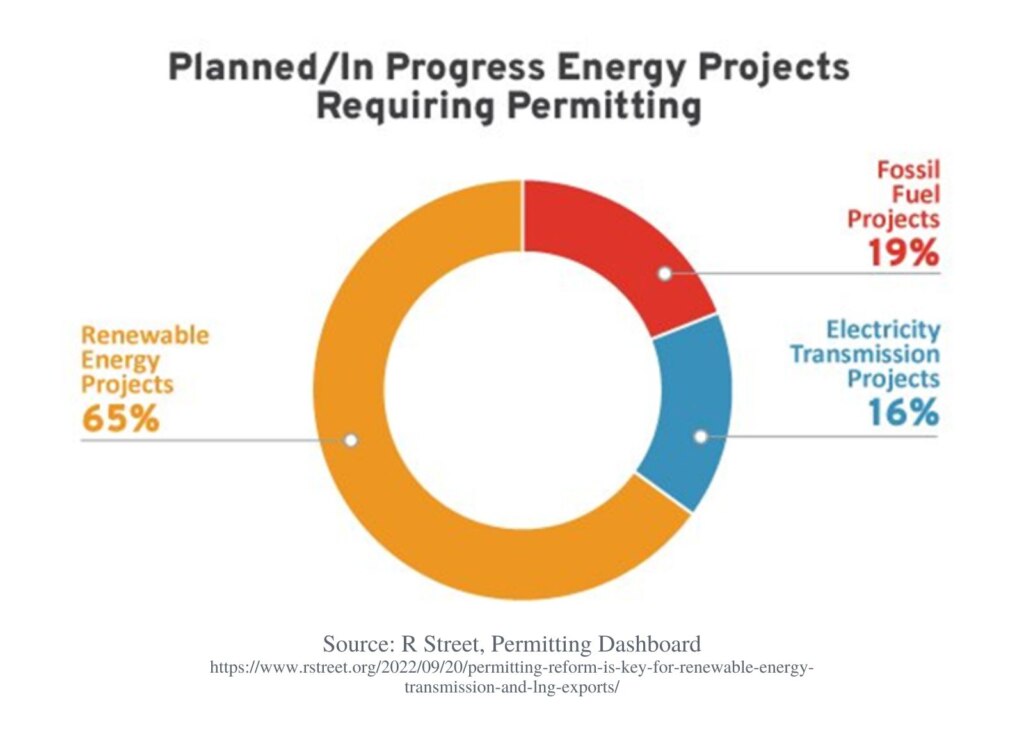2022 Montana Energy Strategy: Bringing Abundant Energy To Montana
By Frontier Institute - October 12, 2022
Download Report
2022 Montana Energy Strategy: Bringing Abundant Energy To Montana
By Frontier Institute - October 12, 2022
Download Report
Key Points
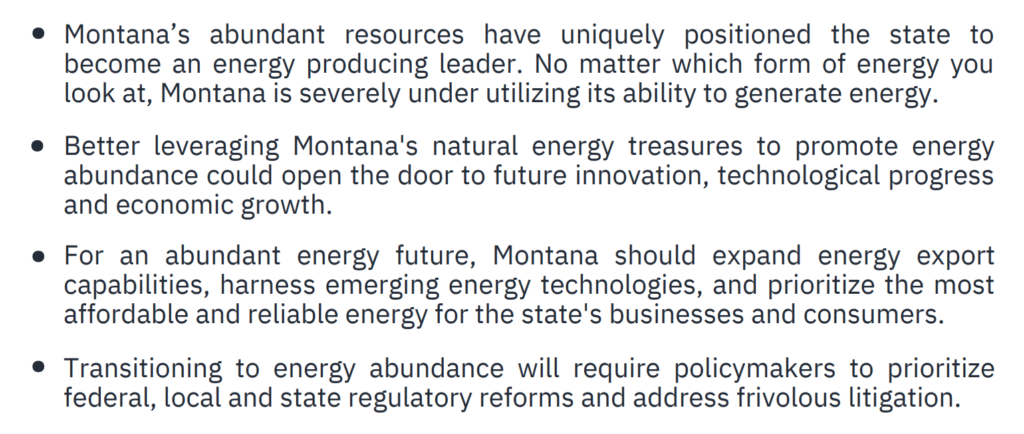
Where Does Montana Stand On Energy Production?
- Ranked 10th among states with the largest share of electricity generated from renewables
- Ranked 7th largest producer of hydroelectric power in 2021
- Wind power is the 3rd largest share of the state’s energy generation
- Ranked 6th in total energy expenditures per capita in 2020
- Ranked 47th in average retail price of electricity to the residential sector in May 2022
- Ranked 40th in Total Net Electricity Generation as of May 2022
- Our neighboring states have the following ranking in Net Electricity Generation:
From 2010 to 2019, Montana’s electricity consumption increased by 11 percent. In that same timeframe, Montana’s maximum load on the system, defined as peak demand, increased by 13 percent. Peak demand in the summer months is growing faster than in the winter. 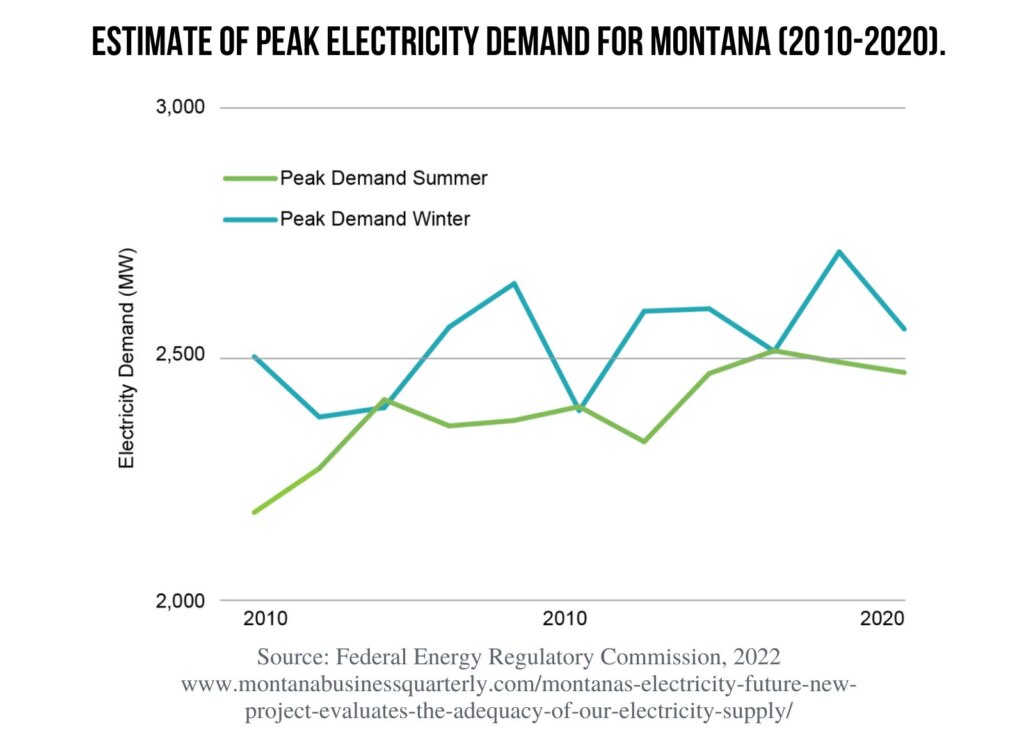


Montana has the nation’s largest recoverable coal reserves, about 30 percent of the US total reserves, accounting for about 5 percent of US coal production. In 2020, Montana consumed about 1/3rd of the coal mined in the state, while half was sent by rail to other states. One-fifth of coal mined is exported to other countries.

Montana’s geothermal power potential is significantly underutilized. Using traditional technology, the National Renewable Energy Laboratory (NREL) has identified seven known surface-level hydrothermal sites with the right subsurface conditions for geothermal energy development. Next generation geothermal could provide truly clean, consistent and inexhaustible energy potentially anywhere. Despite the abundant opportunities Montana has no geothermal power plants under development.

In 2022, the Energy and Telecommunication Interim Committee studied the feasibility of nuclear power. Importantly, nuclear power can provide a clean and consistent power supply. Small modular reactors (SMRs) have a power capacity of up to 300 MW per unit while potentially reducing the risks and costs associated with traditional nuclear power plants.

Conventional hydroelectric power was Montana’s second largest power source in 2021. The year prior, hydroelectric power was the largest single source. As of 2020, there are currently three proposed hydroelectric projects. At the same time, 12 dams lack feasibility studies for hydroelectric power. The Gordon Butte Storage Project is estimated to generate 1.3 million MWh annually. The Clark Canyon Dam and the Gibson are estimated to generate 15,695 MWh and 40,000 MWh, respectively.

With solar only producing less than 1 percent of Montana’s energy in 2021, the solar power industry has ample room to grow. Per Montana's DEQ, the state’s sunlight (called solar resource) is 26 percent greater than the national average. The NREL estimates that rural utility-scale solar could generate up to 8,000 TWh of electricity per year.

Montana ranks 20th in natural gas production. However, it consumes twice as much natural gas as it produces, making it a net natural gas importer for domestic consumption. The state is also an important transmission hub for natural gas. Pipelines cross Montana from Canada, North Dakota and Wyoming. About 3/4ths of the natural gas that enters Montana leaves the state, almost all of it continuing to Midwestern markets. Montana also has the country's largest single underground natural gas storage site. A recent assessment by the US Geological Survey estimated that the Bakken and Three Forks Foundations could produce 4.9 trillion cubic feet of unconventional natural gas.
Montana accounts for less than 1 percent of total oil reserves and produces about 1 in every 200 barrels of US oil. Montana ranks 12th in oil production. Petroleum production declined from its 2006 peak to 51,000 barrels per day in 2021. Montana has 45,000 plus total oil wells and 5,000 plus active wells today. The US Geological Survey assessment referenced above estimated that the Bakken and Three Forks Foundations could produce 4.3 billion barrels of unconventional petroleum.

The state is ranked 5th in potential wind power but lags behind neighboring states and is ranked only 24th in the nation for actual wind power generation. Montana’s wind power potential could reach 679,000 MW. Montana, with 2,500-terawatt hour per year (TWh) generation potential, is second only to Texas. For context, worldwide net energy consumption in 2019 was 23,845 TWh. Montana’s wind power potential also could provide a tenth of global net electricity consumption.

The rising information economy requires grid modernization. Unfortunately, according to the most recent Grid Modernization Index, Montana is in the bottom two states for overall grid modernization efforts. Montana is mainly tied to the US Western Grid, with only the easternmost part of the state linked to the US Eastern Grid. Miles City DC Tie is one of the few converter stations that connect the Eastern Grid and the Western Grid. Most intrastate electric transmission is owned by either NorthWestern Energy (NWE) or the Western Area Power Administration (WAPA). Distribution services tend to utilize NWE or WAPA transmission lines instead of owning their own. 
Montana has been an electricity exporter for decades. In 2015, Montana exported more than 50 percent of the energy it produced. This electricity is exported through four primary transmission lines that connect Montana energy producers to the Northwest (Path 8), Alberta (Path 83), Idaho (Path 18), and the Southeast (Path 80). Considering Colstrip, Path 8 can continuously transmit up to 2,200 MW east-to-west via double-circuit 500-kilovolt (kV) transmission lines under ideal circumstances. The three other transmission paths can transmit as follows:
- Path 80:
- 150 MW from Miles City DC Tie to the US Eastern Grid
- 600 MW from Yellowtail Dam to the US Eastern Grid
- Path 83: 325 MW to Alberta
- Path 18: 383 MW to Idaho

Except for the counties connected to the US Eastern Grid, most of Montana’s grid is not managed by a Regional Transmission Organization (RTO) or an Independent System Organization (ISO). RTOs and ISOs are independent entities that emerged in the 90s after the Federal Energy Regulation Commission (FERC) sought to introduce competition and efficiency into electricity markets. RTOs and ISOs promote non-discriminatory access to transmission lines and foster a competitive environment in restructured electricity markets. These organizations are responsible for developing a platform for the oversight of transmission capacity, transmission access scheduling and congestion management.
The Need For Abundant Energy
Abundant energy is critical to encourage faster economic growth and higher living standards. Cheap and consistent energy decreases the cost of all goods and services consumed daily and enables entrepreneurs to produce more goods and services. Our friends at the Center for Growth and Opportunity recently released a report on “Superabundance.”
In that report, Austin Vernon and Eli Dourado highlight some remarkable technologies that could become economically feasible with abundant energy. These include electric planes, vertical farming, water reclamation and more.
Montana is currently ranked 6th in total energy expenditures per capita. While this ranking is primarily due to Montana’s size and relatively small and dispersed population, lowering total expenditure through energy abundance could open the door to innovations in the state and make Montana one of the largest energy exporters in the country. Data centers, battery manufacturing facilities and the semiconductor industry are highlighted as industries that could benefit from Montana’s abundant energy.


The rise of the information economy requires whole new infrastructure investments. Physical structures are necessary to facilitate the efficient transmission, storage and processing of data. Data centers are critical to the digital infrastructure. Data centers are large warehouse-like buildings that host thousands of servers facilitating all types of data storage and processing. Tenants are charged for the physical space, power, cooling, security and other services. However, data centers use vast amounts of electricity for their operations, accounting for roughly 1 percent of the world’s total electricity use, or 205 TWh. Like Northwestern Energy, the 15 largest data center companies have all made “net zero” pledges. Considering Montana’s solar and wind energy potential, the state could become a critical component of the data infrastructure in the 21st century.

The growing demand for electric vehicles, wind turbines and solar panels open up an opportunity to bring 21st-century manufacturing jobs to Montana. The North American industrial battery market is expected to grow by over 8.47% between 2020 and 2025. Many states are already seeing massive investments in battery manufacturing. Ford and the Japan-based Envision AESC invested in battery manufacturing projects in Kentucky. While estimates on the energy consumption vary for producing electric vehicle batteries, it will likely be around 2 TWh. The states that are best equipped to provide abundant energy have the greatest advantage.

Critical to the internet of things is the semiconductor or microchip. The recent semiconductor shortage meant products ranging from iPhones to automobiles sat incomplete, creating further shortages. Montana’s US Senators worked hard to ensure the US could shore up potential future shortages. Companies like Applied Materials, located in the Flathead Valley, have already put Montana on the map as an important semiconductor hub and employ hundreds of Montanans. More companies like Applied Materials will likely invest in expanding Montana’s burgeoning semiconductor industry with access to abundant energy. Coupled with Montana’s vast mineral deposits, Montana can become a vital semiconductor hub.
The Montana Energy Strategy: A Vision For The Future
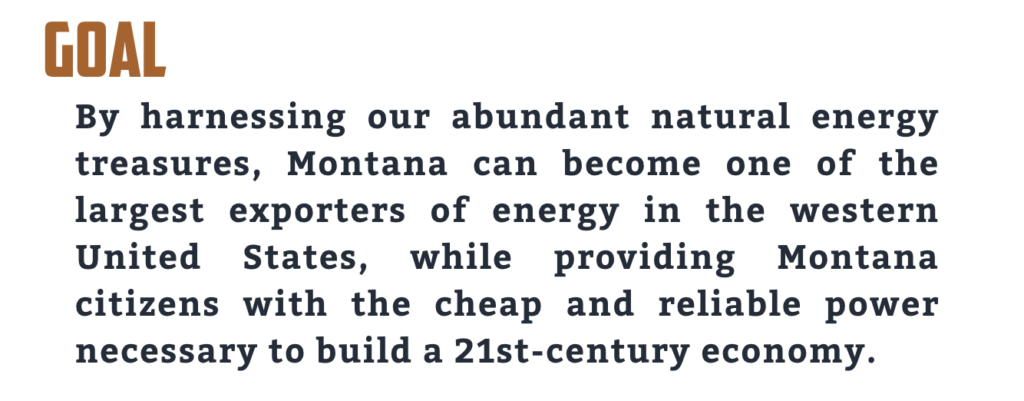

Montanans should benefit from the cheapest and most reliable energy available. In the current state marketplace, that means maintaining significant baseload power generation assets such as Colstrip for as long as financially and technologically feasible.
The global energy crisis in 2022 has proven that wind and solar are not ready to replace more reliable energy sources. Demand for reliable power is surging as global energy needs outpace what renewable energy sources can provide. In 2021, coal-fired power plants led the world’s power generation growth for the first time since 2013.
When governments push reliance on new energy sources such as wind and solar before these sources are ready for prime time in the market, it can lead to energy disaster, as we have seen play out in Europe amidst the war in Ukraine. On the other hand, there is no good reason for governments to obstruct wind and solar development.
Instead, Montana should continue an all-of-the-above energy approach to meet growing energy demand and prioritize affordable and reliable energy for Montana businesses and consumers.

While some governments continue to divest from fossil fuels, even to the detriment of their citizens, Montana should use this to our advantage. By exporting our abundant renewable energy, Montana can provide renewable power to out-of-state utilities at a highly competitive rate while leveraging the cheapest, most reliable energy for use in-state. Exporting more renewable energy would likely require Montana utilities to renegotiate contracts known as Power Purchase Agreements (PPA’s) with some of the wind and solar Qualifying Facilities (QFs) to allow currently constructed resources to be bid at a competitive rate to out-of-state energy consumers. Reliable Colstrip power could replace the newly exported renewable power for Montana customers.
On the other hand, the demand for reliable energy like coal is surging globally. Modernization of Montana’s grid will ensure we can export our energy abundance. Building out new transmission lines to serve markets in the south and east would enhance Montana’s export capability, as would additional Colstrip transmission line upgrades. Expanding 21st-century demand and frequency response capabilities would further increase grid resilience, reliability and stability. Expansion of dispatchable energy storage capabilities would help make wind and solar energy sources more reliable.

Montana is well suited to become home to emerging energy technologies like energy storage, advanced nuclear and geothermal. These promising technologies have an essential advantage as carbon-free alternatives for reliable baseload power generation.
Enabling investment and innovation in these technology sectors could make Montana a hotspot for future energy industries. Significantly, deploying emerging energy technologies in declining rural communities that have long been reliant on fossil fuels could revitalize these areas with good-paying jobs and economic activity.
Addressing Government Barriers To Montana’s Energy Future

Proposed energy projects are often delayed or even denied by local governments. At the beginning of this year, Yellowstone County commissioners withdrew a permit for a natural gas pipeline after a lawsuit was filed by neighbors to block the project. The Commissioners eventually approved the pipeline permit after a public hearing that exceeded 3-hours. The pipeline permit is part of a larger natural gas project to build a 175 MW power plant in Laurel that is the subject of ongoing lawsuits from radical environmental groups.
NIMBYism also harms renewable energy projects. In 2022, the Butte-Silverbow Zoning Board denied a permit for a massive solar project mainly due to public concerns about “possible impacts to viewsheds, property values, and wildlife and the potential for noise pollution.”
Local governments impose various regulations on energy projects, conditioning approval on public hearings, special requirements or a lengthy and costly discretionary permit process. Radical environmental activist groups often weaponize public hearings to pressure local leaders into rejecting new energy proposals. Montana leaders should streamline local review processes and clarify the rights of landowners to use their property for safe, clean energy development.

Leaders across the political spectrum have recognized the challenges posed to energy development by environmental permitting, particularly under the National Environmental Policy Act (NEPA).
The average NEPA Environmental Impact Statement (EIS) takes 4.5 years to complete and is over six hundred pages. NEPA-related litigation can make the review drag on even longer or halt projects that have already been approved.
Ironically, most planned/in-progress energy projects requiring NEPA permitting are for renewable energy and new transmission lines.
For Montana’s abundant energy future, policymakers must reform environmental permitting.
Federal policymakers have recently proposed significant changes to NEPA permitting, including setting a maximum timeline for permit reviews, reducing paperwork and imposing a shorter statute of limitations for lawsuits challenging permitted projects.
Montana’s own Montana Environmental Policy Act (MEPA) was initially identical to the National Environmental Policy Act. Thankfully, the Montana Legislature has mitigated the worst aspects of NEPA by implementing statutory timeframes for environmental reviews for MEPA, but more can be done. State policymakers should prioritize reducing federal regulatory redundancies in MEPA, streamlining review processes and adding new categorical exclusions for safe, clean energy and transmission lines.

As noted above, frivolous environmental litigation can further delay or even stop energy projects. As recently as September 2022, an environmentalist group reached a settlement with the Bureau of Land Management (BLM) that blocked new drilling permits on 58,000 acres in Montana and North Dakota, pending more analysis on potential groundwater and climate harm. Another lawsuit struck down hundreds of oil and gas leases in Montana, Wyoming and other western states for violating sage grouse protections. Environmental groups filed a lawsuit against the Montana Department of Environmental Quality (DEQ) for permitting the previously discussed Laurel natural gas power plant, claiming DEQ did not correctly apply MEPA to address air pollution.
Importantly, even green energy projects can become the target of environmental litigation. In 2007, a proposed 500 MW wind farm in Glasgow came to a halt because local environmentalist groups worried the turbines would “loom” over the adjacent wilderness areas. Additionally, the Crazy Mountain Wind Project and Mission Creek Wind Project were halted because of legal actions based on concerns of “nuisance” and bird populations.
Without reform, frivolous environmental litigation will stifle the transition to energy abundance. Federal policymakers should mitigate excessive environmental litigation by requiring lawsuits to be filed and resolved quickly. State policymakers should ensure that Montana landowners’ right to use their property for safe, clean energy development is explicitly protected as a fundamental right.
